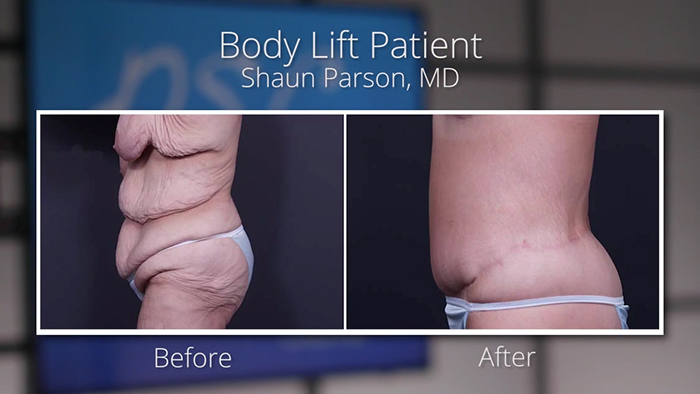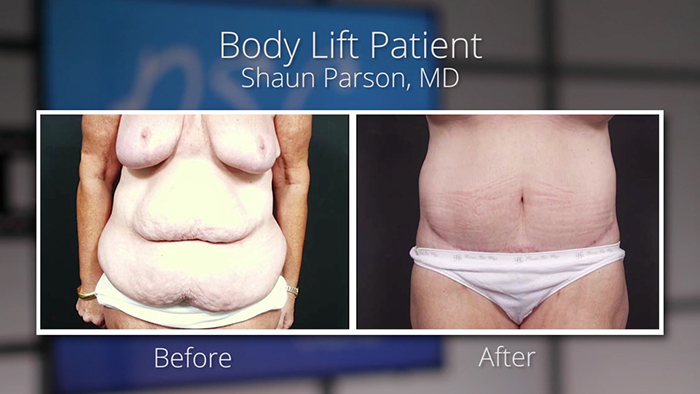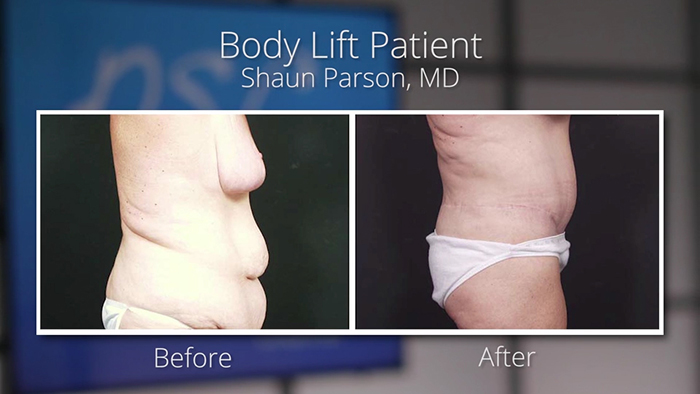Since 2000, statistics collected by the American Society of Plastic Surgeons show considerable growth in the lower body lift procedure. In fact, they are up an astonishing 3,973%. Television shows like ‘The Biggest Loser’ have heightened people’s awareness about “skin surgery.” As such, the rise in patients seeking bariatric surgery has contributed to a surge in weight loss patients.
Dr. Shaun Parson, a board certified plastic surgeon in Scottsdale, Arizona, sees more and more prospective patients seeking surgery. “Whether the weight loss was surgically induced or the product of diet and exercise, to lose that much weight really says something about the person. They are some of the most motivated patients I have the privilege to help,” he shares.
Two Options
According to Parson, once weight loss is relatively stable, you have a person who has lost 50, 60, or even 200 pounds. What do you do when the body literally shrinks leaving sagging skin behind? “Patients have two options. They can live with the extra skin, or they can have surgery,” states Parson. “Only surgery can eliminate sagging skin.”
There is a reason even the best personal trainer cannot shrink skin. After gaining a lot of weight, the skin stretches and the elastic elements of the skin which normally recoil after weight loss are damaged. It never “snaps back” to conform to a newer, slimmer contour. Dr. Parson recalls a man for whom he removed over 65 pounds of skin. “You can never put the skin back to where it was, but through a body lift, you can fix what happened as a result of their journey by lifting and shaping.”

How a Body Lift is Accomplished
A lower body lift can offer a dramatic change in appearance for MWL (massive weight loss) patients, or those who are victims of time, gravity, or genetic predispositions. The procedure is tailored toward those who not only have excess skin in the abdominal area, but excess or sagging tissue extending 360 degrees around their torso.
Body lift surgery helps elevate the entire lower body by tightening the abdominal wall and removing excess skin on the tummy, lateral thighs, and buttocks. Most patients will come into the office and lift their skin to demonstrate the look they are seeking—this mimics the potential “re-suspension” of tissues that can be accomplished with this surgery. When MWL patients are having a lower body lift, the outer thigh often needs to be treated with liposuction in order to optimize contour.
Parson explains that a lower body lift has an incision which extends circumferentially. This type of lift has a greater effect on the outer thigh and buttock contours. It’s important that scars are symmetric and even; one side should be a mirror image of the other.

The Best Candidates for a Body Lift
MWL is defined as losing over 50% of excess weight, however this is dependent upon a prospective patients frame, normal weight and Body Mass Index (BMI). Plastic surgeons typically want their patients to have a BMI under 30. There is also a time factor. It’s important for the patient to have maintained a reasonably stable weight for at least one year.
Patient expectations are also critical. Patients having a body lift after massive weight loss understand their skin has been compromised. Reconstructing these tissues presents a surgical challenge and must be handled with care.
Not a Lunchtime Procedure
In general, it takes 10-14 days after surgery to comfortably perform daily activities. Driving is discouraged for 2 weeks and it may take up to a month to return to preoperative energy levels. Swelling may take 4-6 weeks to resolve, the scar will take at least one year to mature and fade to a lighter color, and a reasonable assessment of the results can be determined at about 2-3 months.

In addition, surgeries may be staged in two to three steps if an arm lift, breast lift or facial rejuvenation is part of the overall surgical plan. It is a highly customized surgical plan and ultimately a personal decision. Each area has its own challenges particularly because of compromised skin and potential scarring.
The Reveal
Body lifts are not usually covered by insurance and can come with a hefty price tag. Many surgeons strongly believe it should be treated as a reconstructive procedure rather than cosmetic because of the incredible psychological benefit a patient’s experience.
Body contouring surgery after weight loss is very important for patients who have worked so hard to lose weight so they can be healthier, feel better, and participate in life more fully. Dr. Parson has seen these makeovers literally change people’s lives. “It’s transformative,” he says.














Facebook
Twitter
Instagram
YouTube
RSS